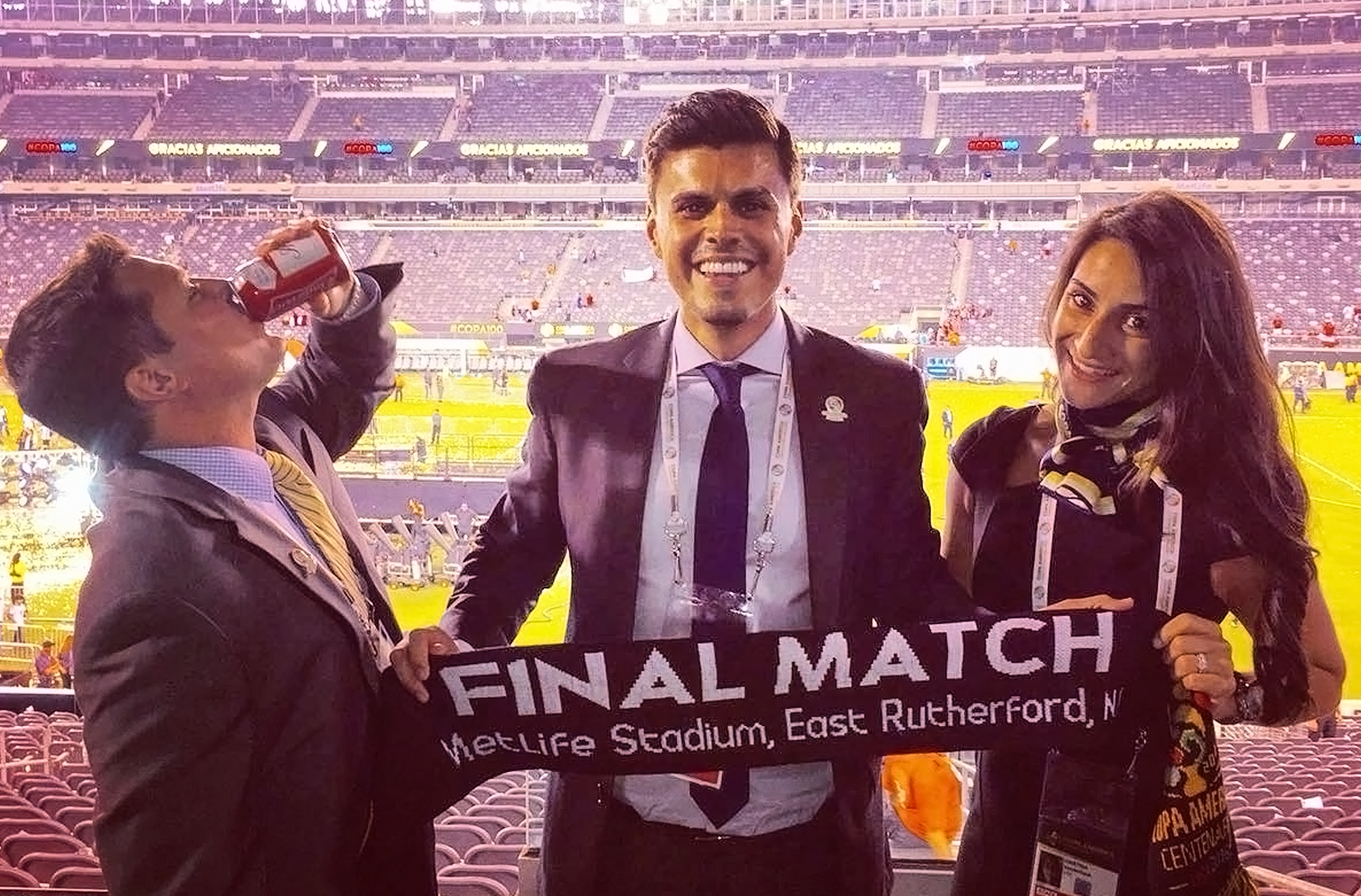As a female born and raised in Brazil, my passion for the sport of “Futebol” traces back to my childhood memories formed during the 1994 World Cup. After moving to the United States as a teenager, I’ve personally witnessed both the remarkable rise of soccer in this country and the transformative cultural role it has played since then.

Futebol has always been in my DNA. The passion for the Canarinhos, the local reference to the iconic yellow and green jersey with five winning stars, is something I will always treasure. Reflecting on the impact of the 1994 Men’s World Cup takes me beyond just the final penalty kick where Brazil defeated Italy. As a young fan, I witnessed the game through the lens of national glory—the pure fandom, the celebrations with vibrant face paint, and the fireworks (while the adults likely enjoyed their caipirinhas).
Over the past three decades, the growth of soccer in the United States has been a phenomenon to watch. The two World Cups held in the U.S. during the 1990s had a profound impact on the sport’s growth and popularity in the country. From the pivotal 1994 FIFA World Cup to the rise of MLS and the explosive growth of the NWSL, ‘The Beautiful Game’ has transitioned from a niche sport to a prominent part of the American sporting culture.
Today, with less than 450 days until the 2026 FIFA World Cup, the start of the 30th season of MLS and the beginning of the NWSL season underway, the stage is set for soccer to reach unprecedented heights here in the U.S.

The 1994 World Cup ignited interest by showcasing its global appeal and drawing diverse audiences. At the time the U.S. was experiencing a demographic shift with a growing Latino population, which now makes up about 19.1% of the U.S. population1. This shift fueled participation in soccer, as many Latinos brought their passion for the sport, creating a strong base of players and fans. Additionally, the 'soccer mom' phenomenon, which saw a surge in youth participation driven by middle-class families, especially in suburban areas, became a defining feature of the sport’s development.
The substantial growth of youth soccer participation has continued, with outdoor soccer participation in the United States reaching over 14 million people in 2023, an 8% increase2 from the previous year, and illustrates the sport's remarkable expansion. Post-1999, given the success of women’s soccer and a more soccer-engaged population, participation numbers soared, reflecting the growing integration of soccer into the American sporting landscape.
While the previous World Cups helped ignite interest in and participation of soccer here in the U.S., I believe the 2026 World Cup will finally establish the U.S. as a global soccer powerhouse. The fans will feel it, the athletes will experience it and investments will continue to come in.
The global soccer fans will see, hear and feel this passion. FIFA is currently projecting the 16 host cities are expected to welcome over 5 million fans during the month-long tournament3. For those lucky enough to attend a match in person, they will get to experience some of the most exciting venues to watch a soccer match from Atlanta and Kansas City to Dallas and Los Angeles. Watch parties will pop up all over the continent, rivalling those held in other countries. The energy and enthusiasm will be tangible from coast to coast.
The athletes themselves will train at some new (or newly renovated) soccer-specific venues including the KC Current and Atlanta United’s Training Facilities. The world’s best soccer players will experience these best-in-class facilities - from training grounds and weight rooms to the treatment centers and classrooms. Team facilities in the U.S. are, on average, far superior to those overseas; this will be an amazing opportunity for the international players to experience the amenities and services American teams can take advantage of.
Investments into the sport will continue. The globalization of soccer has also brought people closer, fostering cross-cultural connections and shared experiences. As the sport continues to grow, it has proven to unite communities worldwide and strengthen the sport’s global appeal. People crave connectivity and shared experiences; expect more money to flow into the sport to keep up with the demand.
Soccer has transformed the sporting landscape by becoming a global force that connects diverse cultures. Its rise in popularity, particularly in North America, has reshaped fan engagement, media coverage, and the sports industry as a whole. With the FIFA World Cup in 2026, the 2028 Olympics in Los Angeles and the most recent announcement of the FIFA Women’s World Cup 2031 (in North America) on the horizon, soccer is poised for major growth. Next summer’s World Cup, hosted by the U.S., Mexico, and Canada, will elevate the sport’s profile, while the Olympics will further boost its visibility, especially with the rise of women’s soccer.
As a lifelong Futebol fan personally and professionally, I am so excited to witness, and be part of, the global growth of soccer and the role it has in continuing to unite communities and propel itself forward.
Footnotes
- 19.1% of Latino Population data extracted from U.S. Department of Health & Human Services ↩︎
- Statista, Nov, 2024 ↩︎
- FIFA, Jan. 2025 ↩︎

